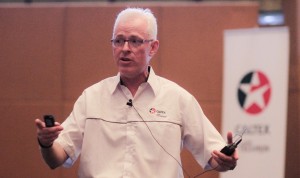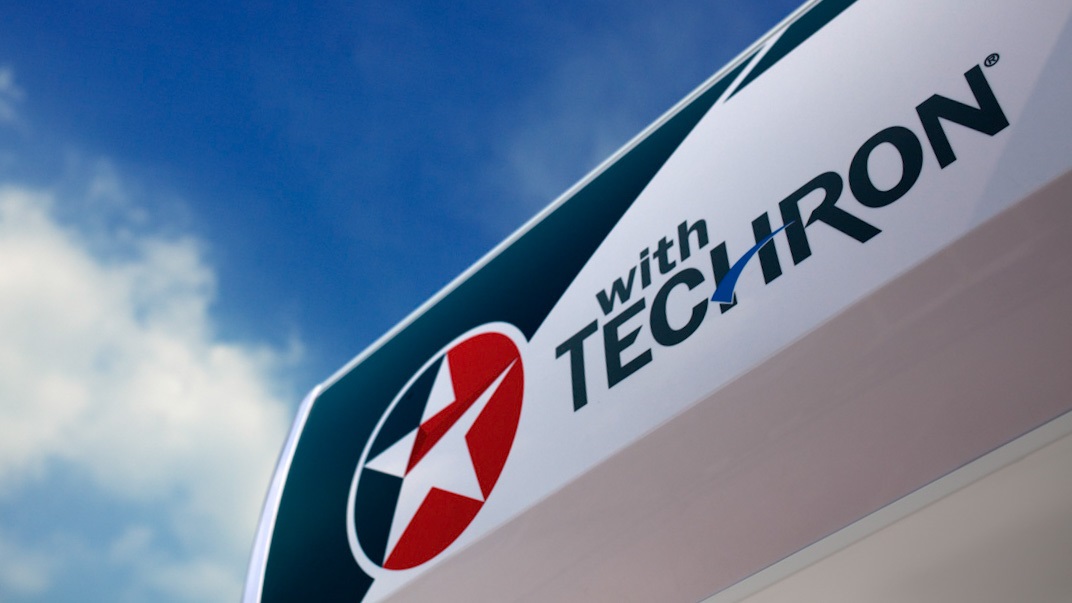
Chevron Malaysia recently organised a “Media Educational Workshop” in conjunction with the introduction of the Euro 4M-rated Caltex RON97 with Techron. As some of you may be aware, the availability of Euro 4M petrol came into effect on 1st September 2015 following the Malaysian government’s mandate. However, it applies only to RON97 petrol currently, with Euro 4M RON95 to be enforced only in 2018 (Hey no rush, Department of Environment). At present, RON95 petrol is rated at Euro 2M (at minimum, some are already on Euro 3 but this isn’t declared). According to Platts, the premier information provider of energy, petrochemicals, metals and agriculture, Euro 4M RON97 petrol is likely to impact only 5% of current petrol demand.
 To ensure all who attended gained an insight into Caltex’s Euro 4M RON97 petrol, Senior Product Engineering Specialist, Greg Engeler (pictured), was enlisted to brief the media on the company’s latest premium blend and also to take on some “behind-the-scenes” queries. Here’s what we gathered:
To ensure all who attended gained an insight into Caltex’s Euro 4M RON97 petrol, Senior Product Engineering Specialist, Greg Engeler (pictured), was enlisted to brief the media on the company’s latest premium blend and also to take on some “behind-the-scenes” queries. Here’s what we gathered:
The “M” in Euro 4M does not mean “Malaysia”
While some would like to think that the world is centred around us, the “M” in Euro 4M simply refers to a “Modified” emission standard. In essence, it means the Euro 4M formulation is catered to suit the local climate and requirements, and is not necessarily inferior or superior to other Euro 4 applications.
What are differences between Euro 4M and Euro 2M?
On paper, Euro 4M petrol yields cleaner emissions compared to Euro 2M, with reduced levels of nitrous oxide, hydrocarbon, carbon monoxide, benzene, particulates, but the key difference being the level of sulphur content – a reduction from 500ppm to 50ppm. However, what comes out of the exhaust is dependent on the capability of the emission system of the vehicle, but generally, a lower sulphur level enables catalytic converters to work more efficiently.
Does RON97 improve engine performance?
This is dependent on types of engines, some will benefit more than others. The most likely candidates are modern direct injection turbocharged engines as a higher RON (Research Octane Number) petrol is more stable under high pressures and compressions, i.e., less likely to “pre-ignite” or “detonate” before the actual combustion as intended by the engine management system. Hence a high RON rating allows for a more “precise” combustion process which helps engines maximise their potential in terms of power output and fuel efficiency.

The Techron additive in Caltex petrols (both RON95 and RON97) cleans fuel injectors and clears intake valves of carbon deposits. What happens to these deposits?
Some of the deposits are “burnt” in the engine’s combustion chamber, while some are “expelled” from through the exhaust system. Either way, the Techron additive cleans the engine.
Is it true that the Techron additive is added at the stage when the fuel tanker is filled?
Yes, the Techron additive is added to the petrol when the fuel tanker is being filled at the depot. The precise amount of Techron additive is electronically controlled so that every tankful of Caltex petrol has the correct amount of Techron.